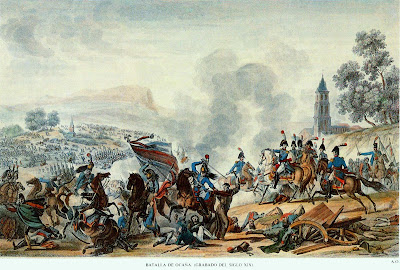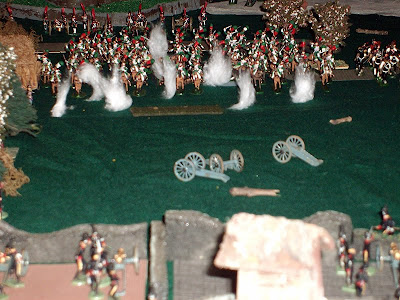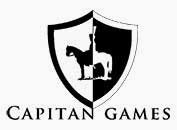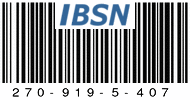The battle of Alba de Tormes (november 28, 2009)
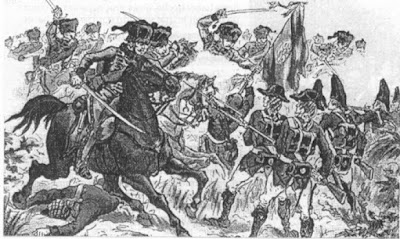 Whereas the Spanish Army of the Center (or La Mancha) advanced towards Madrid (being routed in Ocaña), the Army of the Left under the Duke del Parque, had a diversionary mission in order to draw French forces away from the capital.
Whereas the Spanish Army of the Center (or La Mancha) advanced towards Madrid (being routed in Ocaña), the Army of the Left under the Duke del Parque, had a diversionary mission in order to draw French forces away from the capital.
Del Parque’s campaign had begun with a victory, at Tamames on 18 October 1809 and, after occupying Salamanca, he advanced towards Medina del Campo (Valladolid), reaching that town on 23 November, at the same moment as a French force under Kellerman arrived from the opposite direction. The next day, del Parque received news form the Sppnish rout at Ocaña and, despite his Spanish superiority, 32,000 vs. 16,000, he retreated towards Alba de Tormes.
On the afternoon of 28 november, Kellerman's cavalry found the Spanish camped around Alba de Tormes. Confident that he was not closely pursued, del Parke split his army, with two divisions west of the river Tormes and three in the town. Kellerman had only 3,000 cavalry against 18,000 Spaniards on the right (east) bank of the river. Kellerman had only 3,000 cavalry, but he decided to risk a cavalry attack on the much larger Spanish army to avoid the Spanish scape.
 The French cavalry attacked while the Spanish were struggling to form a line, hiting the Spanish right, before they had time to form into squares, breaking two infantry divisions (Losada and Belveder). The Spanish fled towards the bridge and the French took around 2,000 prisoners and causing 1,000 casualties. Kellerman then turned to deal with La Carrera’s left flank division, but this time the Spanish had formed into squares, and the French were repulsed.
The French cavalry attacked while the Spanish were struggling to form a line, hiting the Spanish right, before they had time to form into squares, breaking two infantry divisions (Losada and Belveder). The Spanish fled towards the bridge and the French took around 2,000 prisoners and causing 1,000 casualties. Kellerman then turned to deal with La Carrera’s left flank division, but this time the Spanish had formed into squares, and the French were repulsed.Spanish were not able to move in squares and as long as Kellerman maintained the pressure, they were unable to escape. Eventually, when the French infantry began to arrive, La Carrera ordered his men to attempt to reach the bridges and because of the darkness, the French were unable to take much advantage of the situation.
The Spanish withdrew back into the mountains losing another 3,000 men during the retreat.
Thus ended the fateful Spanish autumn campaign of 1809.

